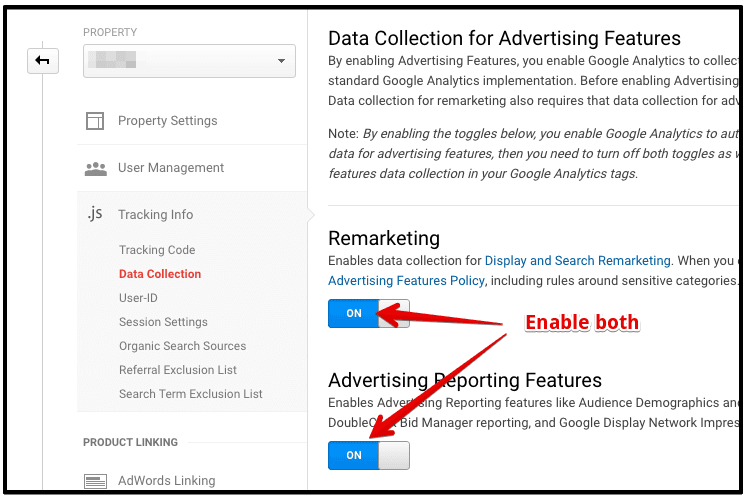A Full Overview to Remarketing In Google Analytics
A Full Overview to Remarketing In Google Analytics
Blog Article
Harnessing Remarketing in Google Analytics: A Comprehensive Guide
Harnessing remarketing in Google Analytics offers businesses a tactical side in getting to out to potential customers. This guide will certainly lose light on the necessary actions involved in utilizing the full capacity of remarketing in Google Analytics, leading to boosted marketing results.
Comprehending Remarketing in Google Analytics
Remarketing in Google Analytics allows companies to tactically target users who have formerly communicated with their site or mobile app. By leveraging information from Google Analytics, companies can develop customized remarketing listings based on customer habits, such as pages seen, activities taken, or details goals attained. This effective device allows organizations to re-engage with customers that have actually revealed passion in their services or items, eventually boosting the likelihood of conversion.
Comprehending the different types of remarketing approaches is critical for a successful campaign - What Is “Remarketing” In Google Analytics?. Google Analytics provides different choices, including conventional remarketing, dynamic remarketing, and remarketing checklists for search ads (RLSA) Each type offers a special purpose and can be tailored to satisfy details advertising and marketing objectives
Furthermore, assessing the efficiency of remarketing projects is essential for maximizing outcomes. Google Analytics supplies beneficial understandings right into the performance of different remarketing approaches, permitting services to make data-driven decisions and fine-tune their targeting method. By continually keeping an eye on and readjusting remarketing initiatives based upon analytics information, companies can make the most of ROI and drive success in their advertising and marketing campaigns.
Setting Up Remarketing Campaigns

After establishing audience listings, the following action is to connect Google Analytics with Google Advertisements. By connecting these two systems, companies can flawlessly transfer audience lists from Google Analytics to Google Ads for remarketing objectives. This combination enables even more specific targeting and much better project efficiency.
Once the accounts are connected, organizations can develop remarketing projects in Google Advertisements making use of the audience lists formerly specified in Google Analytics. These projects can be customized with certain ad creatives, messaging, and bidding process strategies to properly re-engage with past visitors and drive conversions. By complying with these steps, organizations can take advantage of the power of remarketing to enhance their advertising and marketing initiatives and increase ROI.
Utilizing Target Market Segmentation Approaches

Predefined sections in Google Analytics enable you to swiftly examine usual target market classifications like new individuals, returning customers, or users that completed a details objective on your web site. Personalized sections, on the various other hand, allow you to produce unique sections based on certain standards that are very important to your organization purposes. Dynamic remarketing listings immediately adjust based on user behavior, revealing customized advertisements to customers who have connected with your site specifically ways.
Analyzing Remarketing Efficiency Metrics
Upon examining the efficiency of remarketing projects in Google Analytics, the evaluation of crucial efficiency metrics provides valuable insights right into target market interaction and conversion prices. By delving into metrics such as click-through rates (CTR), conversion rates, cost per acquisition (CERTIFIED PUBLIC ACCOUNTANT), and return on advertisement spend (ROAS), marketers can evaluate the success of their remarketing efforts. Evaluating these metrics enables marketing professionals to maximize campaigns, fine-tune target market targeting, and allocate spending plans effectively to improve total remarketing performance.
Optimizing Remarketing Strategies
When refining remarketing methods in Google Analytics, concentrating on audience division is extremely important for attaining project success. By dividing your target market into specific sections based on their habits, demographics, or rate of interests, you can customize your ads better to every team. This targeted approach raises the probability of engaging customers who have currently shown interest in your solutions or items, resulting in greater conversion rates.
Another vital element of enhancing remarketing approaches is continuously screening and refining your campaigns (What Is “Remarketing” In Google Analytics?). A/B testing various ad creatives, messaging, or deals can aid you identify what resonates finest with your target market and drives one of the most conversions. By assessing the performance of these examinations in Google Analytics, you can make data-driven decisions to optimize your remarketing initiatives better
Additionally, leveraging dynamic remarketing can considerably improve your project results. This function allows you to reveal personalized ads to individuals based on their past communications with your web site, showcasing solutions or products they have formerly checked out. By supplying customized web content to users based upon their actions and interests, dynamic remarketing can assist raise interaction and drive conversions.
Conclusion
To conclude, harnessing remarketing in Google Analytics is a strategic method to target individuals who have actually formerly engaged with an internet site. By producing tailored target market lists and using audience division strategies, businesses can optimize remarketing projects for increased conversion prices. Assessing performance metrics and continually enhancing techniques are essential for maximizing the performance of remarketing initiatives.
Google Analytics offers different options, including standard remarketing, vibrant remarketing, and remarketing checklists for search advertisements (RLSA)After establishing up blog audience lists, the following action is to link Google Analytics with Google Ads. By connecting these two platforms, businesses can effortlessly move audience lists from Google Analytics to Google Advertisements for remarketing objectives.When the accounts are connected, companies can produce remarketing projects in Google Advertisements using the target market notes formerly defined in Google Analytics.When refining remarketing strategies in Google Analytics, focusing on audience division is critical for attaining project success.
Report this page